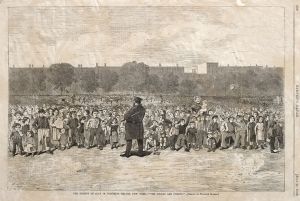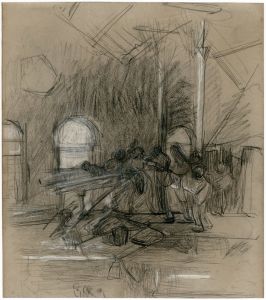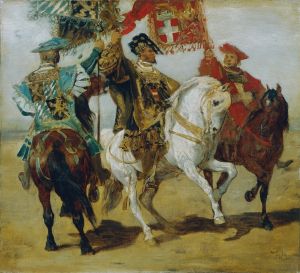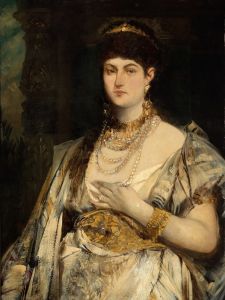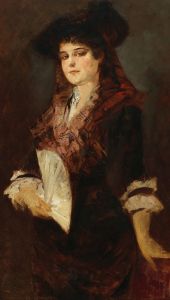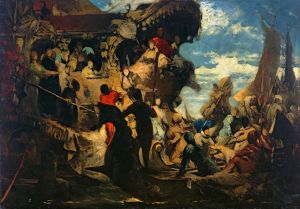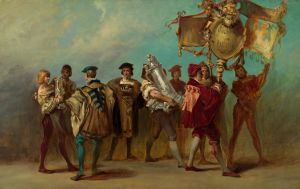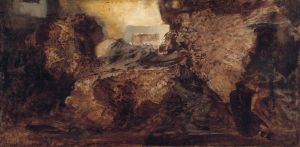
Entwurf zum Festzug 1879 – Die Müller und Bäcker
A hand-painted replica of Hans Makart’s masterpiece Entwurf zum Festzug 1879 – Die Müller und Bäcker, meticulously crafted by professional artists to capture the true essence of the original. Each piece is created with museum-quality canvas and rare mineral pigments, carefully painted by experienced artists with delicate brushstrokes and rich, layered colors to perfectly recreate the texture of the original artwork. Unlike machine-printed reproductions, this hand-painted version brings the painting to life, infused with the artist’s emotions and skill in every stroke. Whether for personal collection or home decoration, it instantly elevates the artistic atmosphere of any space.
Entwurf zum Festzug 1879 – Die Müller und Bäcker (Design for the Parade 1879 – The Millers and Bakers) is a painting by the Austrian artist Hans Makart (1840–1884). Makart was a prominent figure in the Viennese art scene during the late 19th century and is known for his opulent and theatrical style, which often combined elements of history, allegory, and decorative art.
This particular work was created as part of Makart's designs for the grand parade held in Vienna in 1879 to celebrate the silver wedding anniversary of Emperor Franz Joseph I and Empress Elisabeth of Austria. The parade, known as the Festzug, was a monumental event that showcased various trades, guilds, and historical themes, reflecting the cultural and economic achievements of the Austro-Hungarian Empire. Makart was commissioned to design the artistic concept for the parade, which included a series of allegorical and historical representations.
In Die Müller und Bäcker, Makart depicted the millers and bakers, two essential trades in society, in a highly stylized and symbolic manner. The painting reflects Makart's characteristic use of rich colors, dynamic compositions, and an emphasis on grandeur. The figures in the artwork are dressed in elaborate costumes, blending historical and fantastical elements, which was typical of Makart's approach to historical themes. The work celebrates the importance of these professions in sustaining daily life and their contributions to the prosperity of the empire.
Makart's designs for the 1879 parade were widely praised for their artistic vision and theatricality, solidifying his reputation as one of the leading artists of his time. The parade itself was a significant cultural event, and Makart's involvement underscored the close relationship between art and public life in 19th-century Vienna.
Today, Entwurf zum Festzug 1879 – Die Müller und Bäcker is regarded as an example of Makart's ability to merge art and spectacle. It also serves as a historical document, offering insight into the cultural and social values of the Austro-Hungarian Empire during its height. The painting is part of Makart's broader body of work, which continues to be studied for its influence on the Viennese art scene and its role in shaping the aesthetics of the era.





